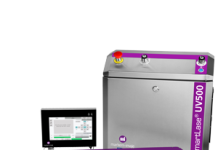According to Mohammed Vachiat, Head of Sales and Innovation at Konica Minolta South Africa, the days of flat, mundane printouts are long gone. Today, print media is a canvas for creativity, a tool for innovation, and a catalyst for captivating customer experiences.
With dynamic colours that make communications pop, unique personalisation opportunities, and innovative embellishments that add a touch of luxury, printed media is an art form that captivates and inspires.
In today’s fast-paced digital landscape, it’s easy to assume that print and paper are a thing of the past; but according to Vachiat, nothing could be further from the truth. In fact, he’s adamant that print is not only alive, but it is thriving like never before.
He is certain that print is far from dead. ‘On the contrary, it’s a medium that is gaining momentum, with its unique qualities and strengths being harnessed by forward-thinking organisations to elevate their brands and customer engagements to new heights’, he said.
‘From where we stand as a business, we view print as more than just ink on paper,’ Vachiat emphasised, ‘it’s a medium that allows businesses to tell their stories in a way that resonates with their audiences, leaving a lasting impression and forging deep connections.’
Vachiat believes there are many reasons why this resurgence in print is taking place, but he points to six that he feels are the most significant:
1. It’s disruptive. According to Vachiat, one of the great ironies of the digital age is that print has now become a disruptor. ‘To make an impact with their marketing, businesses need to do something different, and print is increasingly becoming that ‘different’ approach,’ he explained. He pointed to the growth in popularity of printed brand magazines as proof of this statement, with companies embracing the value of putting good content into what is now a unique and valued hard copy format.
2. Print is tangible and tactile. Vachiat said that one of the main advantages that print has over digital media is its tangibility. ‘Print allows for dynamic colours, tactile embellishments and a level of physical interactivity that you can never get from a digital format,’ he explained, ‘which means it has the potential to make a lasting and highly memorable impression on your customers’. He pointed to the power of printed material in sales and marketing particularly, and said that the tactile experience of a printed client ‘leave-behind’ can be much more memorable than documents stored on a USB drive or sent via a post-meeting email.
3. Print doesn’t add to digital overload. Vachiat argued that print can be a calm oasis in a storm of digital overstimulation. ‘With so much digital content vying for people’s attention, it’s easy for them to feel overwhelmed,’ he said, ‘but in contrast, printed material allows for engagement on the reader’s own terms, helping it to stand out thanks to its basic lack of intrusiveness. This makes print a great way to get, and hold, someone’s attention in a credible and honest way.’
4. It can expand your marketing reach. Vachiat emphasised that, while many people are connected to the digital world, certain demographics are not, and he said that by integrating print into a broader marketing strategy, businesses can ensure these people are not left behind. ‘Printed media allow for highly targeted distribution, rather than the shotgun approach often employed by digital campaigns,’ he explained. ‘By carefully selecting where and how print materials are distributed, the publishers of those materials can ensure that they reach their desired audience and engage them with precisely the right messaging.’
5. It’s still essential for labelling and packaging. Vachiat also pointed out that print media still plays a crucial role in labelling and packaging, particularly for food and beverages, and medicines. ‘Innovative packaging enhances the customer experience, and labels provide essential information such as ingredients, nutritional guidelines and food allergies, ensuring that consumers can make informed decisions about what they are consuming.’ And he highlighted that printed labels can also contain innovative features, like QR codes, which link to additional product information, campaigns and giveaways, showcasing how print can complement digital innovation.
6. Print has proven its resilience. ‘Despite the doom and gloom predictions about the demise of print, it has adapted and changed its role within society to remain a viable and valuable media format,’ he said. ‘As a result, with so many businesses now opting to engage digitally, print actually stands out from the crowd. It’s a clever way to rise above the white noise of a digital world.’
KONICA MINOLTA SOUTH AFRICA
+27 11 661 9000
https://www.konicaminoltasa.com/en-za





















